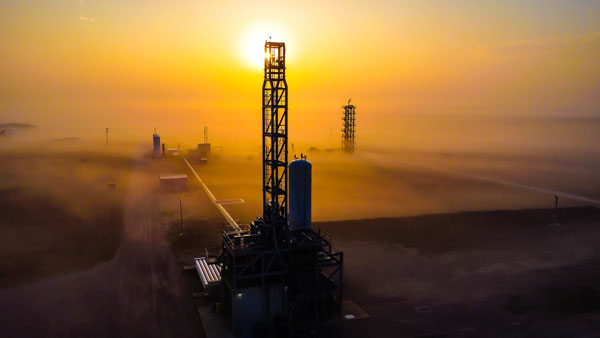From commercial aviation to space exploration to defense to maintenance, repair and overhaul, Texas’ aerospace industry soars to new heights each year. Among the state’s recent accolades is its first place showing in PwC’s 2022 Aerospace Manufacturing Attractiveness Rankings that are based on several categories, including infrastructure, tax policy, labor and economy.
Nearly 2,000 aerospace establishments employ a combined roughly 140,000 Texans who earn $98,000 annually on average. The PwC report notes that Texas is home to 18 of the world’s top 20 aerospace manufacturers. These include Boeing, Airbus, Gulfstream and Bell. Defense-related aerospace players include Raytheon, Lockheed Martin and BAE Systems.
Star gazing? Elon Musk’s SpaceX, which recently moved its headquarters from Delaware to Texas, is reportedly expanding its SpaceX South Texas launch site near Brownsville. And it operates an engine-testing facility in McGregor, midway between Dallas and Austin. Rural Van Horn, in Culberson County, east of El Paso, is the location of Blue Origin’s spacecraft launch site. FAA-licensed spaceports are operating in Midland and Houston, the latter being home for decades to NASA’s Lyndon B. Johnson Space Center.
In March, Texas Governor Greg Abbott launched the Texas Space Commission to ensure the state remains a leading location for space exploration and development for generations to come.
“Since its very inception, NASA’s Johnson Space Center has been home to manned spaceflight, propelling Texas as the national leader in the U.S. space program,” said the governor at an event announcing the Commission’s Board of Directors. “It was at Rice University where President John F. Kennedy announced that the U.S. would put a man on the moon — not because it was easy, but because it was hard. Now, with the Texas Space Commission, our great state will have a group that is responsible for dreaming and achieving the next generation of human exploration in space. Texas is the launchpad for Mars, innovating the technology that will colonize humanity’s first new planet. As we look into the future of space, one thing is clear: Those who reach for the stars do so from the great state of Texas. I look forward to working with the Texas Space Commission, and I thank the Texas Legislature for partnering with industry and higher education institutions to secure the future of Texas’ robust space industry.
Ecosystem Heavyweight
In February, Texas A&M University and NASA announced plans to build a facility for human spaceflight and research and development at Exploration Park, a 240-acre site at Johnson Space Center. “For more than 60 years, NASA Johnson has been the hub of human spaceflight,” said NASA Johnson Director Vanessa Wyche at the announcement. “Exploration Park will be the next spoke in the larger wheel of a robust and durable space economy that will benefit not only exploration of the Moon, Mars and the asteroids, but all of humanity as the benefits of space exploration research roll home to Earth.”
Texas A&M is a significant player in the state’s space industry ecosystem, with more than 300 space-related projects currently under way at more than a dozen locations in the university’s system statewide. Funding awards from NASA and other government agencies have exceeded $25 million annually for the past five years.
In August 2023, Texas A&M’s Board of Regents announced the creation of the Texas A&M Space Institute near the Johnson Space Center, where a $200 million facility will be built to support aeronautics research, advanced robotics and mission training, among other areas. “The Texas A&M Space Institute will make sure the state expands its role as a leader in the new space economy,” said John Sharp, chancellor of the Texas A&M System, announcing the Institute. “No university is better equipped for aeronautics and space projects than Texas A&M.”
Two hours northeast of San Antonio, in rural Briggs, space transportation company Firefly Aerospace recently more than doubled the size of its Rocket Ranch complex where it produces the Northrop Grumman Antares 330 and the Medium Launch Vehicle that the two companies are co-developing. The expansion includes new test stands, bringing the total to six, and facilities for rocket production, assembly and integration, according to the company. Firefly Aerospace also has expanded its headquarters and mission operations centers in Cedar Park, it notes, to support a growing number of launch, lunar, and on-orbit missions.

